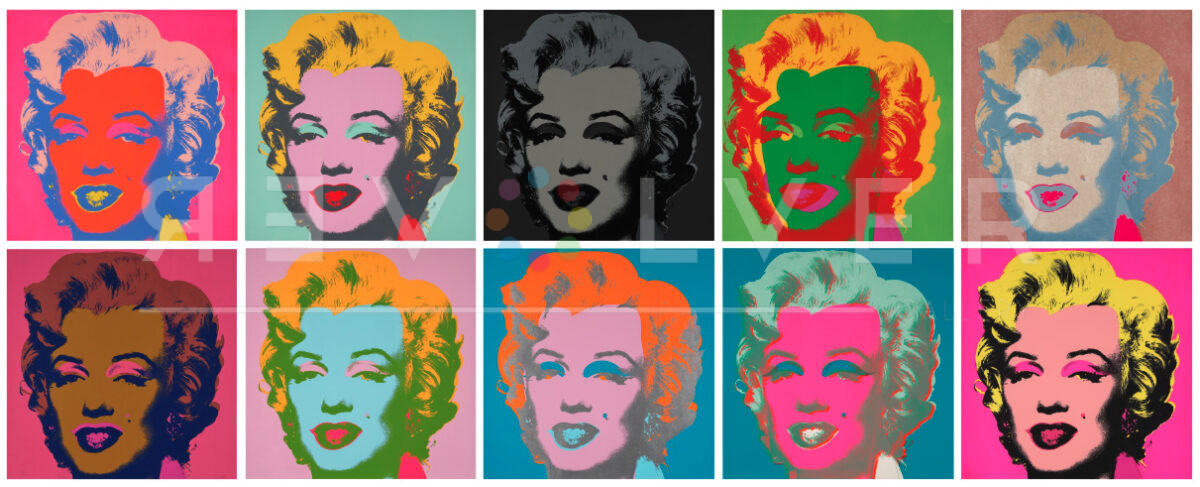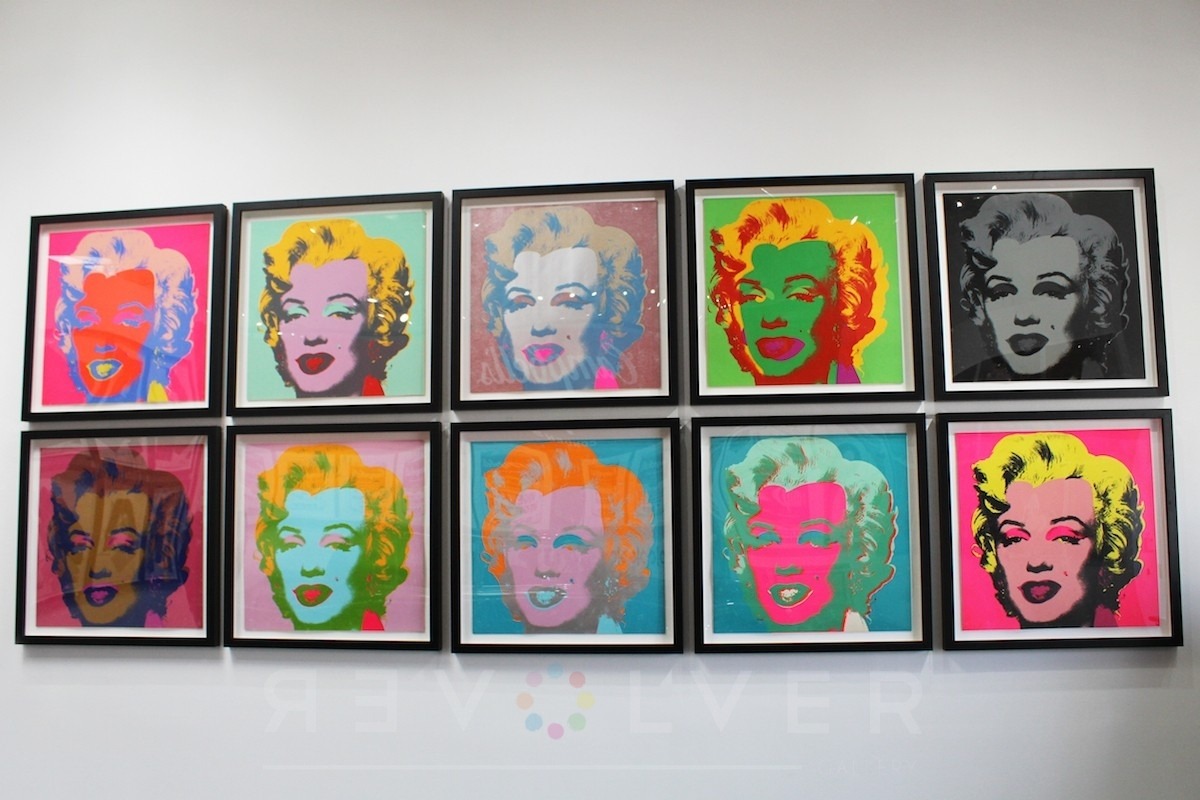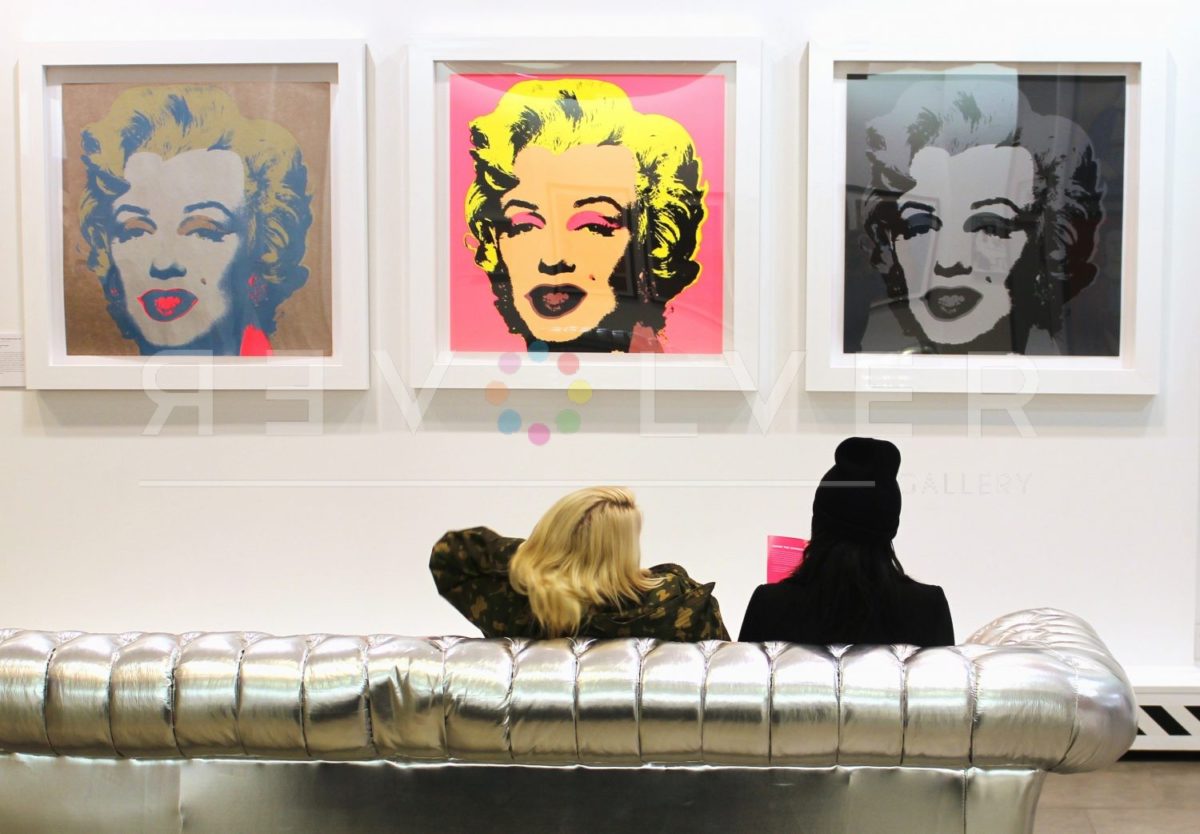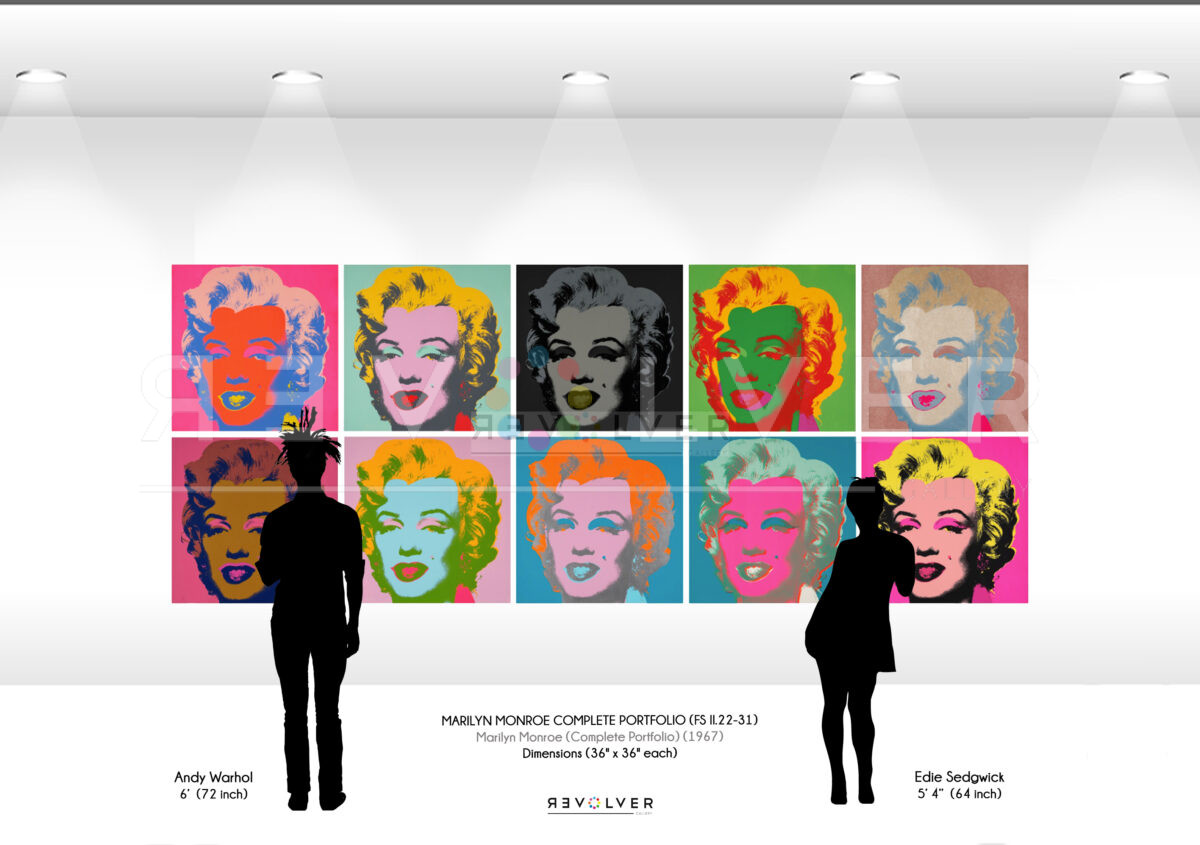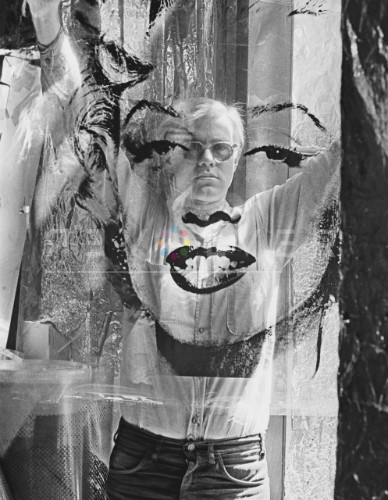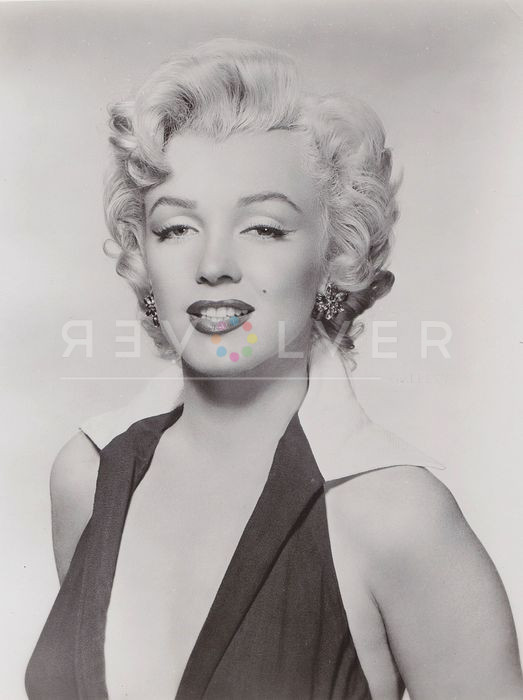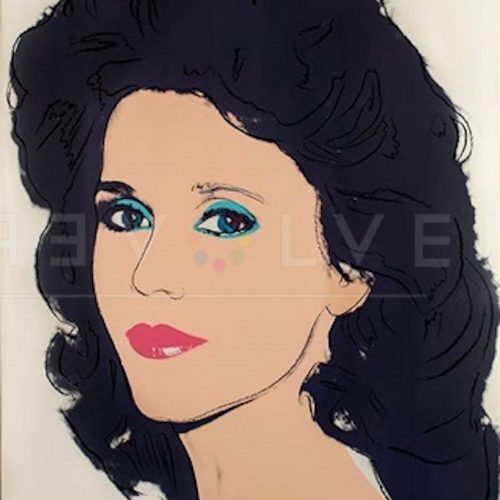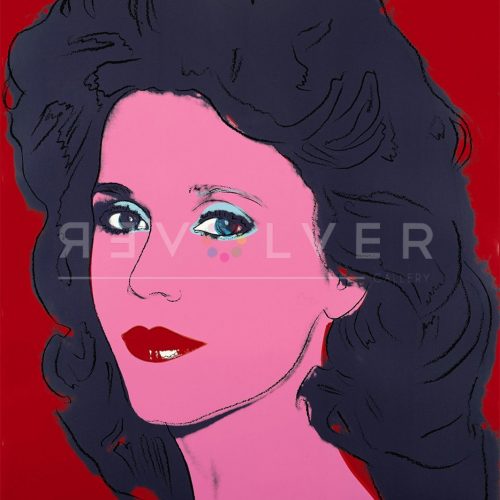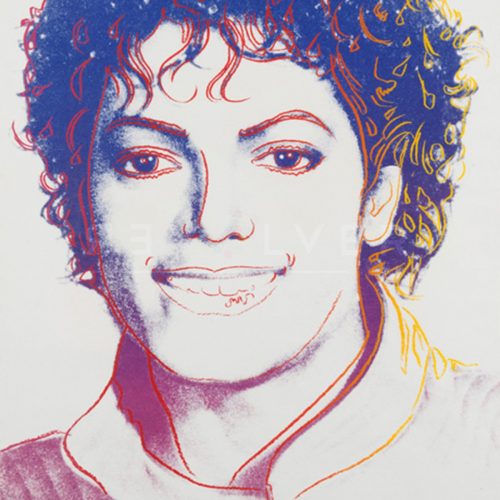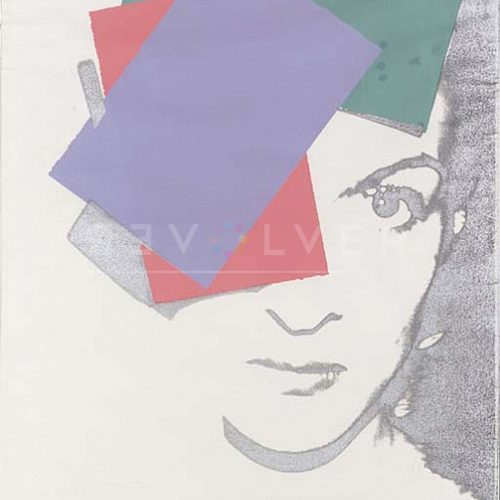Andy Warhol published the Marilyn Monroe complete portfolio in 1967. It comprises ten silkscreen prints depicting cinema’s “it girl”. Marking an early indication of his later-trademark style, the majority of the pieces strongly reflect the loud colors and vibrant energy of the times. The vibrant pinks, deep reds, and neon greens all provide bright contrast that defined the Pop Art movement, and cemented the still-globally identifiable Pop aesthetic.
The Marilyn Monroe portfolio also comprises the first prints published by Andy Warhol’s printing company, Factory Additions, which he started in order to produce his signature high-volume print sets. The series is among his most valuable portfolios ever sold as well as one of the most recognizable sets of images in American iconography.
Andy Warhol’s cultural dominance emerged with the advent of the 1960’s. His iconic depictions of popular American products like Campbell’s Soup and Coca-Cola bottles made him a household name, and a lightning rod for controversy. Despite the polarizing reactions to his appropriative techniques, his artistic repurposing of celebrity identities are arguably what made his style a commanding cultural force——one that’s still universally recognized today. The most significant of these works is certainly the Marilyn Monroe portfolio. Here, Warhol famously created “an icon out of an icon,” immortalizing the actress forever.
As in the majority of Warhol’s portfolios, all ten screenprints are based on a single image, manipulated with his perfectly pop perspective. For the Marilyn prints, he used a publicity photograph taken by Gene Korman for Monroe’s 1953 film Niagara. Warhol’s photograph selection provoked an early controversy about his use of copyrighted material and his artistic integrity; a conversation which would surround many of the artist’s most notable pieces and persist into present-day debates.
In the context of Warhol’s early oeuvre, one can compare his use of a publicity still to his use of branded imagery. Just as he was fascinated by the commodification of everyday products such as Campbell’s Soup, Warhol was fixated on the commodification of personality and the blurred lines between brand and personhood. The Marilyn Monroe portfolio unveils a prime example of this phenomenon and displays the larger-than-life Marilyn Monroe personality as a purchasable product wrapped in a beautiful, blonde package and marketed relentlessly as the portrait of the American Dream. Such works helped acquaint audiences with a signature part of Warhol’s style: the ability to transform and amplify the renown of an already famous image, simultaneously celebrating and parodying cultural iconography.
Warhol created his Marilyn Monroe print series five years after her suicide in 1962. Much of her posthumous fame focused on her status as a tragic figure, defined in the national conversation by her untimely overdose. For Warhol, her continuously evolving fame revealed a potent power in death and highlighted an increasing societal interest in the macabre. The artist attributed this to the swiftly advancing digital milieu and incessant tragic imagery, which he explores in his Death and Disaster series.
In his Marilyn Monroe artworks, Warhol portrays this developing, dark habit with a haunting repetition of the same photograph. Though iterated in colorful and lively projections of Monroe that resemble the persona which attracted the limelight during her time on earth, the image itself echoes of an everlasting stillness and the person behind the facade. Permanently printed in her youth and glamour, the photos are a poignant testament– a frozen portal to her illustrious movie career, a reminder of her tragic destiny, and an indelible image that has become an American cultural emblem. As such, the portfolio not only stands out as an crowning artistic achievement, but as an important piece of American history as well.
Ultimately, the Marilyn Monroe portfolio is, in every way, a defining series for Andy Warhol. The depiction of Monroe stirs some of the most provocative ideas in Warhol’s artistic philosophy. The repetitive nature of the series, which Warhol mass-produced at his Silver Factory, suggests his own personal commodification of Monroe’s identity and completes his cyclical approach to consumerist art. Aesthetically, the style characterizes the absolute gold standard of Pop Art: deliciously marketed and ready-to-purchase. The portraits’ fame and cultural purchase reflect Andy Warhol’s deepest aspirations and contributions to our understanding of what art is.
Marilyn Monroe as Part of Andy Warhol’s Larger Body of Work
After the the success of the Campbell’s Soup series in the early 1960s, Warhol began creating screenprints of movie star portraits including Elvis Presley and Elizabeth Taylor. In addition, Warhol expanded into the realm of performance art with a traveling multimedia show between 1966 and 1967, called The Exploding Plastic Inevitable, which featured the rock band The Velvet Underground. Warhol also worked with his Superstar performers and various other people to create hundreds of films between 1963 and 1968. These films were scripted and improvised, ranging from conceptual experiments and simple narratives to short portraits and sexploitation features. Some of his works include Empire (1964), The Chelsea Girls (1966), and The Screen Tests (1964-66).
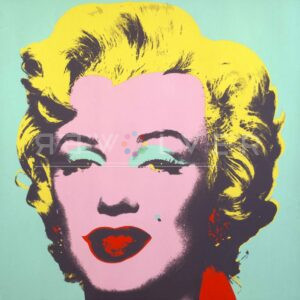
Marilyn Monroe 23
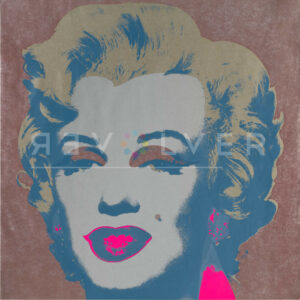
Marilyn Monroe 26
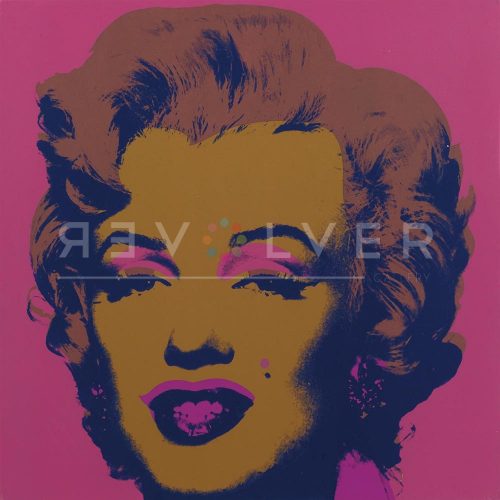
Marilyn Monroe 27
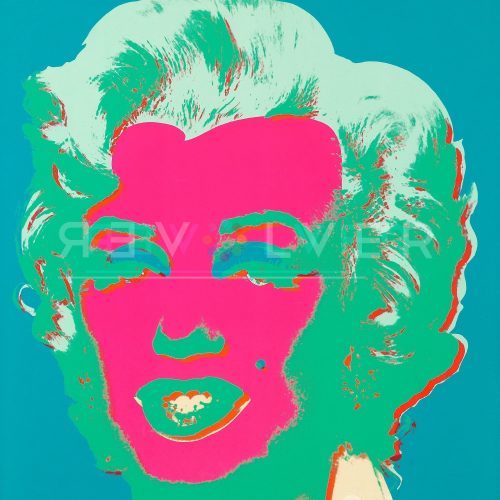
Marilyn Monroe 30
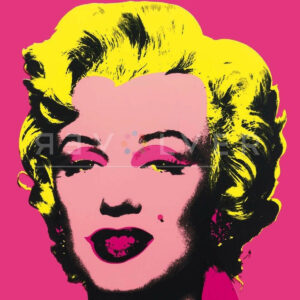
Marilyn Monroe 31
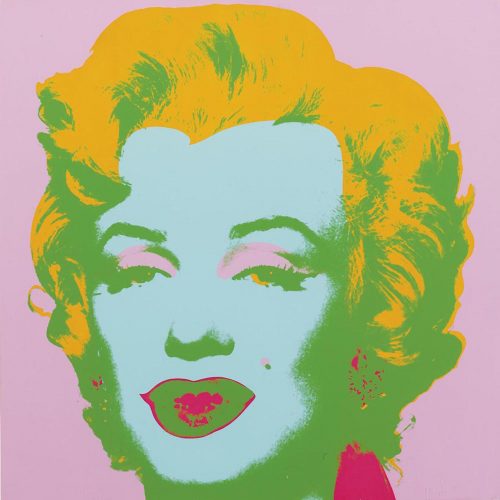
Marilyn Monroe 28
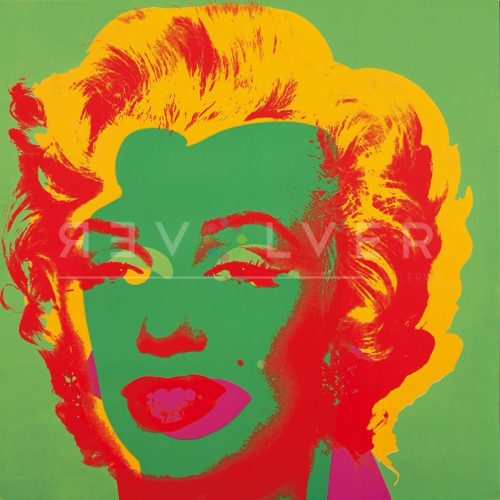
Marilyn Monroe 25

Marilyn Monroe 29
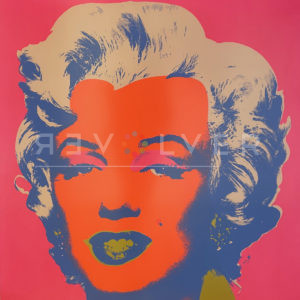
Marilyn Monroe 22
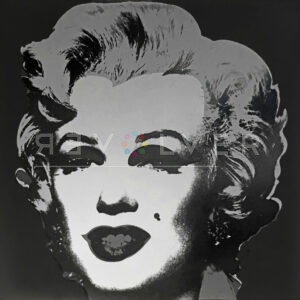
Marilyn Monroe 24

